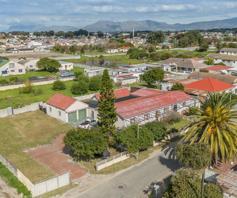The Atlantic Seaboard’s housing market has stoically withstood the brunt of the country’s financial instability, consistently achieving double-digit growth way above the national average, however, in 2017 South Africa’s strongest market finally began to give way.
 This three bedroom, three bathroom home in Fresnaye with a state-of-the-art alarm system and air-conditioning is on the market for R19.5 million - click here to view.
This three bedroom, three bathroom home in Fresnaye with a state-of-the-art alarm system and air-conditioning is on the market for R19.5 million - click here to view.Although the flailing economy slowly started to impact the top end of the market in 2016, steady demand and stock shortages continued to fuel the entry- and mid-level markets, say Lara Kaplan and Fran Segal, Area Specialists in Fresnaye and Bantry Bay for Lew Geffen Sotheby’s International Realty.
“This strong momentum continued into the following year and 2017 started off on a positive note. However, within a few months a discernible downward shift became apparent, and we started to see a drop in both sales volumes and house price growth,” say Kaplan and Segal.
The decline in the residential price growth rate on this prestigious strip is clearly reflected in the November FNB Property Barometer which reports a significant drop from a promising quarterly year-on-year high of 26.5% during the first quarter of 2017 to 23.88% by mid-year and 19.9% by the end of the third quarter.
 This Banty Bay home features four bedrooms plus a guest suite, five bathrooms and two studies. It is selling for R50 million - click here to view.
This Banty Bay home features four bedrooms plus a guest suite, five bathrooms and two studies. It is selling for R50 million - click here to view.Lew Geffen, Chairman of Lew Geffen Sotheby’s International Realty, notes that the freehold sector experienced a sharper knock than the sectional title market, which he attributes to a number of key factors.
While the security and convenience of apartment living have become increasingly appealing drawcards in recent years in the housing and sectional title markets the growing challenge is declining home affordability as consumers are forced to tighten already restrictive belts, this is borne out by the recent 12-month Lightstone reports ending 30 November 2017, says Geffen.
In Fresnaye, average house prices dropped by 1.76% during the last three months alone from a 12-month average of R15.21 million to R14.94 million, and apartments by 0.72% from R5.54 million to R5.5 million
 This upper-level Bantry Bay apartment has two bedrooms, each with their own en-suite bathroom. The master bedroom leads out to a private open sea-facing balcony. It is selling for R17.95 million - click here to view.
This upper-level Bantry Bay apartment has two bedrooms, each with their own en-suite bathroom. The master bedroom leads out to a private open sea-facing balcony. It is selling for R17.95 million - click here to view.In Bantry Bay, house values took a bigger knock, with the average sale price of R12.95 million during the last quarter being 15.9% lower than the annual average of R15.47 million. Apartments, on the other hand, fared well, with the average sale price increasing from R6.47 million to R8.54 million.
Geffen says even the more accessibly-priced suburbs have not been immune to the prevailing economy. In Sea Point, the average house price dipped by 7.89% during the last three months, from R7.29 million to R6.72 million, and in Green Point by 3.26% from R7.29 million to R7.05 million.
Only apartments priced under R3 million reflected any growth between September and November. In Sea Point, the overall average sale price of existing units decreased by 7.6%, but flats in the R1.5 million to R5 million bracket increased by 9.12%.
 This family-sized Bantry Bay apartment has three generous bedrooms and offers over 160sqm of internal living space. It is on the market for R6.95 million - click here to view.
This family-sized Bantry Bay apartment has three generous bedrooms and offers over 160sqm of internal living space. It is on the market for R6.95 million - click here to view.The average sale price of apartments in Green Point rose by 3.9% between September and November from R4.04 million to R4.28 million, and the average price of units in the R1.5 million to R3 million bracket grew by 4.4% from R2.23 million to R2.42 million, with the only drop in average selling price being in the R3 million-plus bracket.
Kaplan and Segal say that although the upper end of the market continued to be hardest hit by the prevailing climate, by the third quarter of 2017 a general nervous sentiment among the wealthy fuelled an increase in the number of luxury homes being put on the market in order to liquidate assets or move money offshore. However, they expect to see a drop in reactive selling in this market after the positive outcome of the December ANC conference.
 This upper-level Bantry Bay apartment has two bedrooms, each with their own en-suite bathroom. The master bedroom has a sea-facing balcony. It is selling for R17.95 million - click here to view.
This upper-level Bantry Bay apartment has two bedrooms, each with their own en-suite bathroom. The master bedroom has a sea-facing balcony. It is selling for R17.95 million - click here to view.Kaplan and Segal add that last year they also noticed an increase in renovation as a growing number of owners opted to stay put rather than sell for a diminished return on investment.







